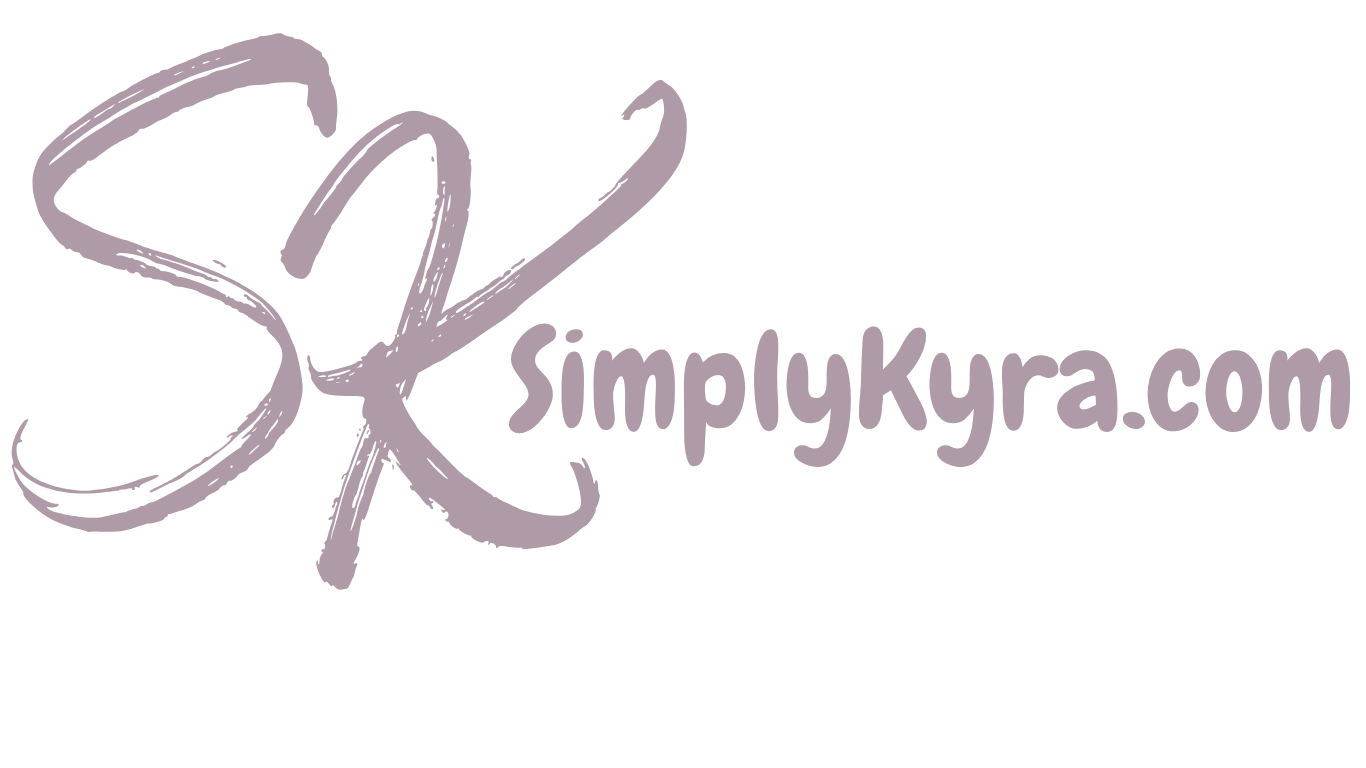
Quiet Book Page - Practice Weaving with Pie
When I was looking into quiet book ideas I fell in love with the idea of an interactive page for weaving. I remember paper weaving in elementary school with fondness. I wanted the page to have more of a point to it than ‘just weaving’ so I decided to incorporate the weaving into baking by making it the lattice top of a pie. When I made this I figured Ada would be too young for weaving , but she had helped me make pie before so I thought she’d still enjoy this page and could grow into the weaving portion.
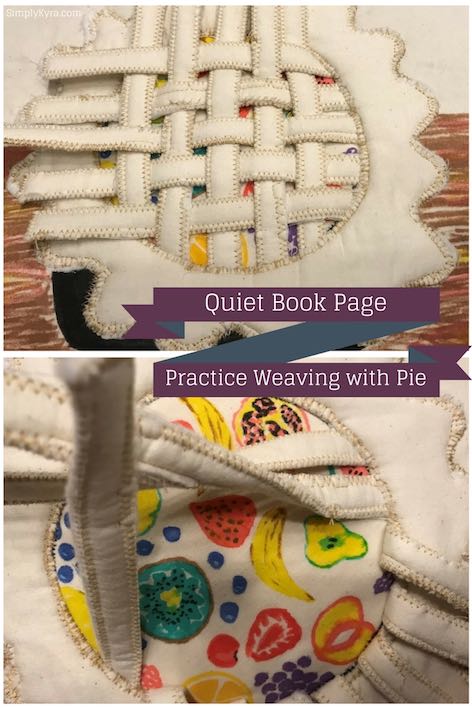
I started out by sketching a rough idea of the pie and labeling out the three levels the pie will need above the page sheet.
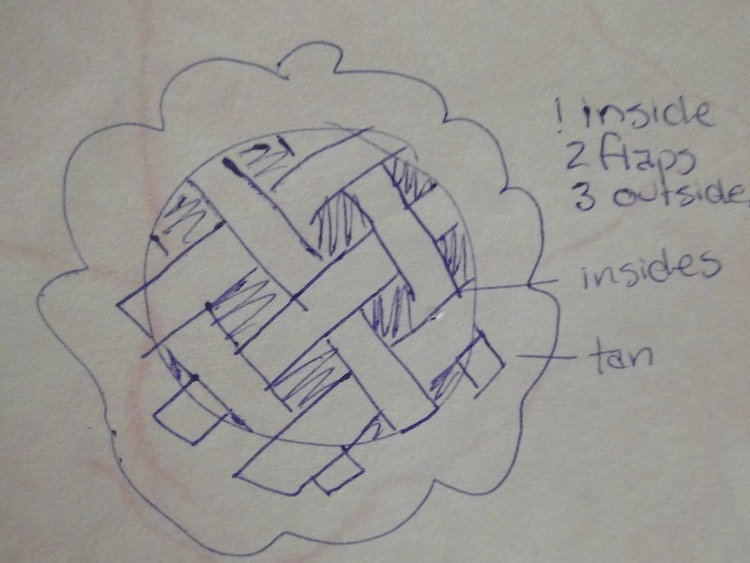
Materials
- 108″ Unbleached Muslin Natural Fabric by the Yard
- Pellon Fusible Thermolam Plus White Fabric by the Yard
- Fabric Markers
- (optional) Heat’n Bond Lite Iron-on Adhesive – depending how you make the lattice
- (optional) Disappearing Ink – to sketch out the pie crust
- Iron – depending on the instructions on the markers
I decided to create the pieces of my pie on reinforced muslin (muslin joined to fusible fabric like my quiet book sheets). To start out I had to decide on the size of my pie as I wanted the entire pie to fit on my quiet book page with enough space around it for the seam allowance when I join this page to it’s reverse. I ended up picking a saucer I had that was about the right size and using it to draw out a circle on my fabric for the pie filling. With the circle as my guide I went on to cut my outer crust from more of the reinforced muslin. After laying it over the circle I realized that the crust itself was too thin so it wouldn’t be able to hide the end of my lattice strips. I decided to leave making the crust until later so I’d know the exact measurements required. Doing this I was left with an extra circle that I decided to use for extra padding under the pie filling.
The next part I worked on was the pie lattices. To create them I took some of the extra reinforced muslin, stuck them together with heat’n bond, and cut the strips. I ended up cutting ten strips, five for each side, and staggered the length of them so the ends would follow the circle’s path. I ended up cutting two long strips (for the center), four strips slightly shorter (to go next to the long one), and four even shorter strips (to go next to the last one). This way each side would look more natural as they circle around the pie. I then attempted to sew around each strip with a larger zigzag stitch to reinforce it’s edges. I had an issue sewing them as they were too thick so many of my stitches skipped and I had to go over those parts a few times.
I then returned to the circle I drew out on the reinforced muslin and drew my pie filling onto it. This started out being a legit pie with halved strawberries and pitted nectarines, yet as I drew them I decided to expand my idea so it would look cooler with more fruit. I figured Ada could pick out the fruits as she got older and wouldn’t care about it being legit. So I then expanded the drawing with a halved pear, apple, and whole-looking cherry… and then went less real by drawing a halved pomegranate, halved watermelon, and a whole banana. I then filled in the empty spaces with a raspberry, blackberry, and blueberries. To draw these I googled images of fruit as inspiration. Once done I set the colors to the fabric with my iron, following the markers’ directions, and then cut it out.
Alternatively, if you have fabric with a design on it you would consider as ‘pie filling’, for example apples cut or whole, you could use that to cut your circle out of instead of creating your own with fabric markers.
Finally most of my pie pieces were ready (leaving the outer crust for later) and we get to start building it! Since I cut an extra circle I started by laying it down first, centered in the middle of the sheet, to go under the pie filling so it’s softer and more raised up from the page. If you choose to use actual stuffing for a similar effect you could always sew the pie filling circle most of the way around, stuff it, and then finish sewing the opening closed.
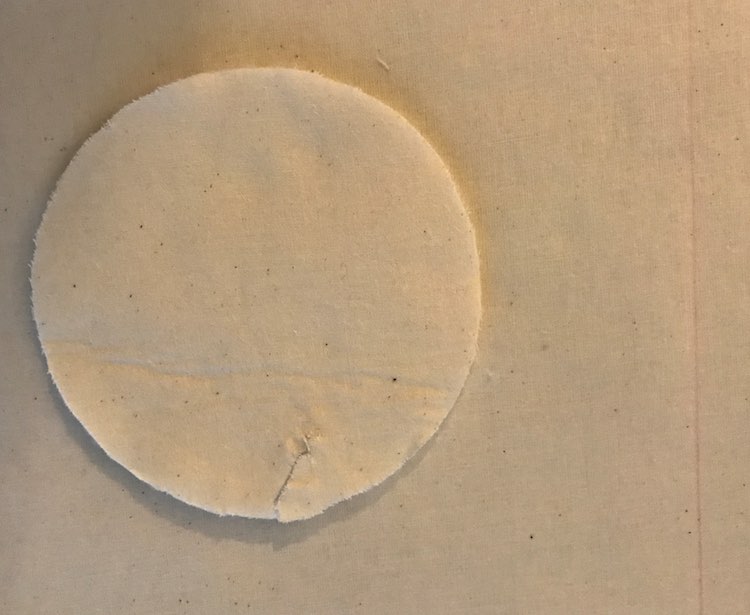
I then laid the pie filling over the circle, pinned it on, and sewed it in place. To sew it down I decided to use a larger stitch (stitch #12 on my Brother machine) and then went around it again to reinforce it with a smaller zigzag stitch. As I drew the border with a black fabric marker most of the stitching was hidden within the line.
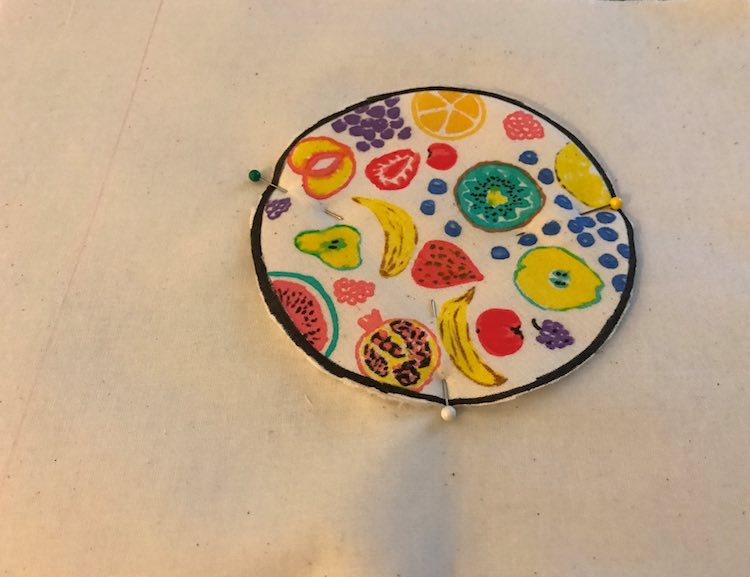
After the filling was secure I went to work on the lattice. I started by laying out the horizontal stripes for the lattice along the right side. I made sure the longest stripe was in the center and the two shortest stripes were on the outer edge. When I was happy with their layout I pinned them down and sewed over them with a large zigzag stitch. I made sure to reinforce the strips in place by sewing over them repeatedly by backstitching.
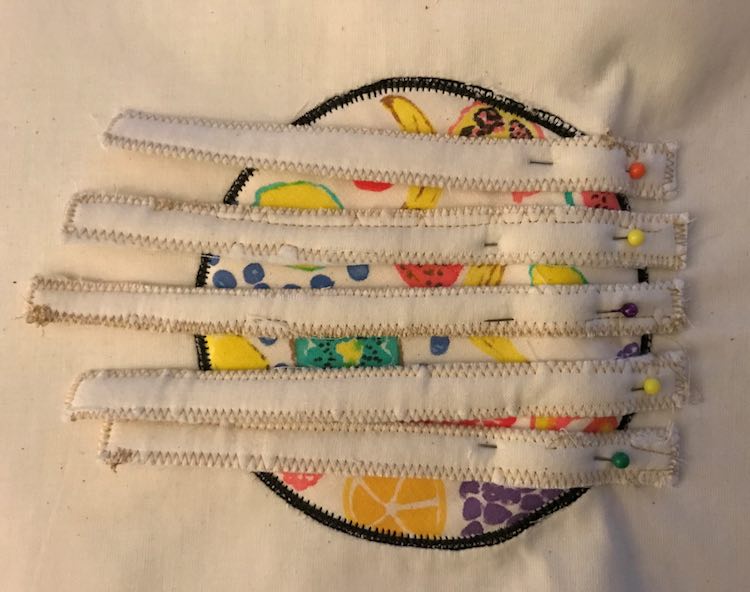
Once the horizontal stripes were sewn down I lifted them out of the way and laid out the vertical stripes. Again I made sure to line the stripes properly, pinned them, and then sewed them down. Remember you want the second half of the stripes on the adjoining side as they will be weaved together to make the lattice pattern.
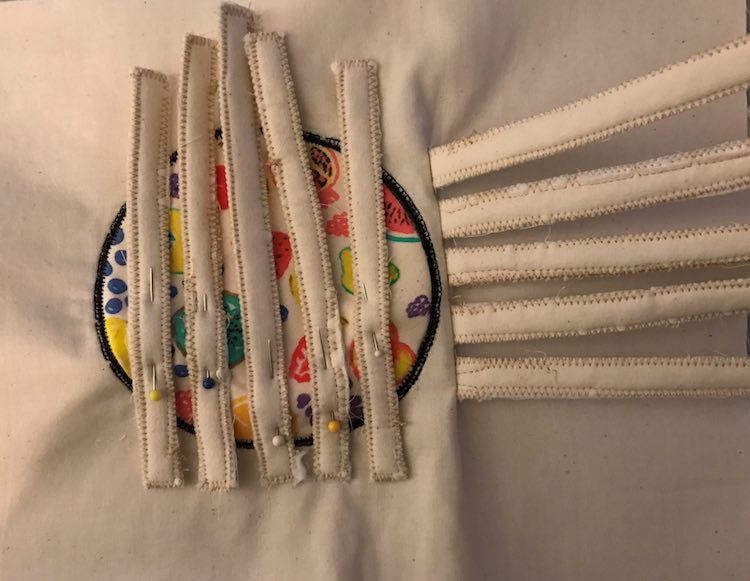
At this point I weaved the stripes together to confirm that my lattice worked.
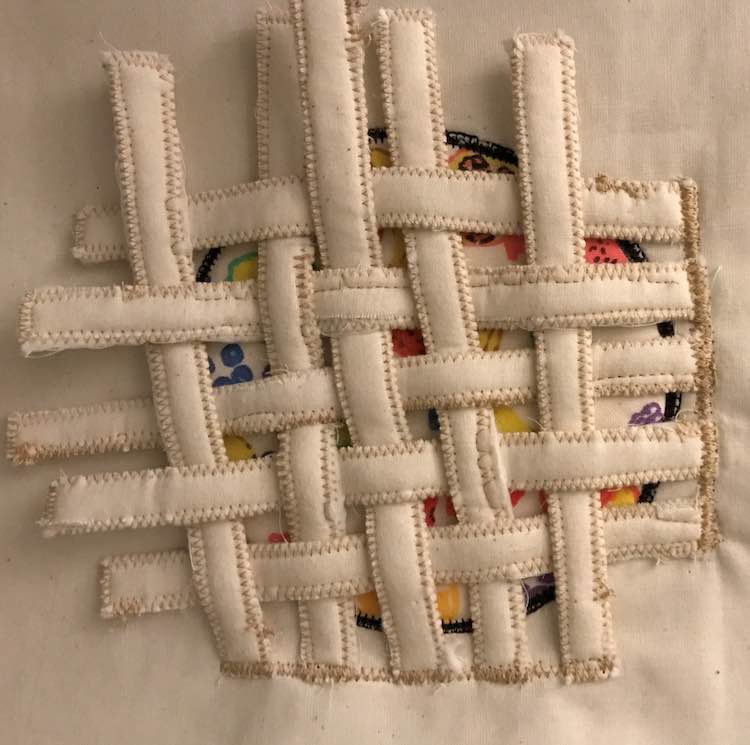
It felt like the page was still missing something so I drew a black pie plate and a wooden table. I wish I had thought to draw this before attaching the pie as it was difficult to iron around the pie to set the ink… though at least I thought of it before attaching the piecrust on top.
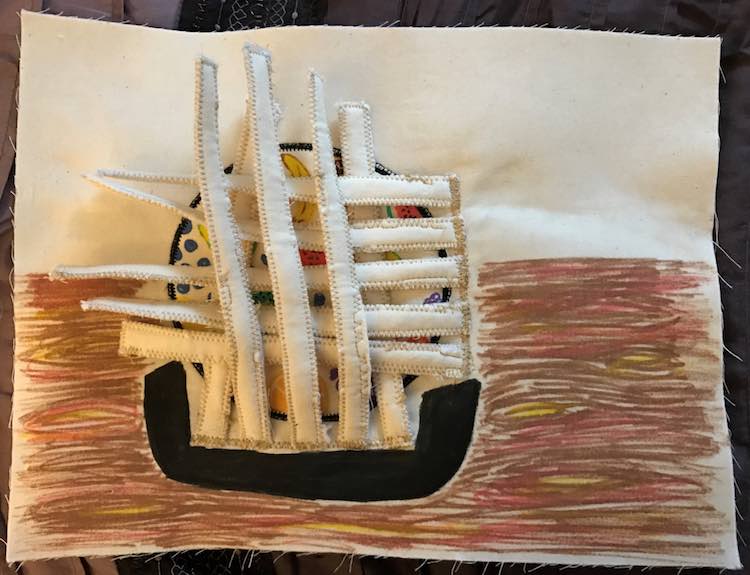
You’re not quite done. We still have to add the outside/top of the pie crust. Making sure my reinforced muslin would be large enough I started by cutting out a circle that was the same size (or slightly smaller) than the original circle used for the pie filling. I then laid the fabric overtop of the pie and marked where the edges of the lattice were with disappearing ink so I could confirm that the crust would cover up the lattice attachment. I then drew out a rough wavy outline outside of the marks I made and cut it out.
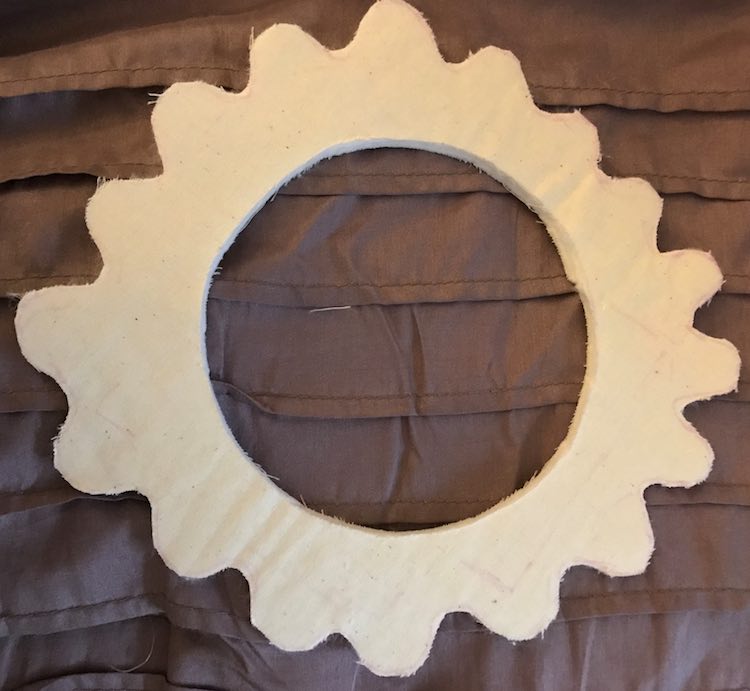
Don’t forget to double check it’s the right size!
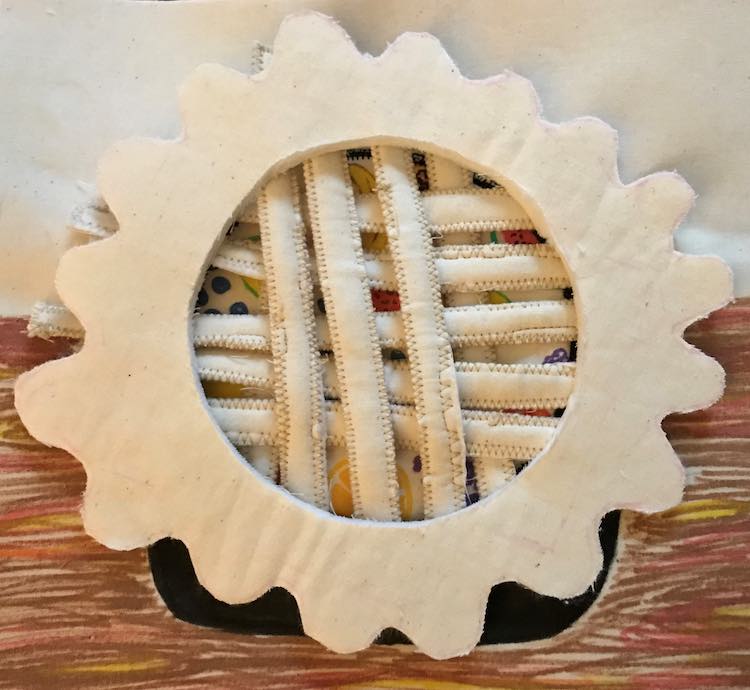
Then pull out the ends of the lattice and pin the crust in place…
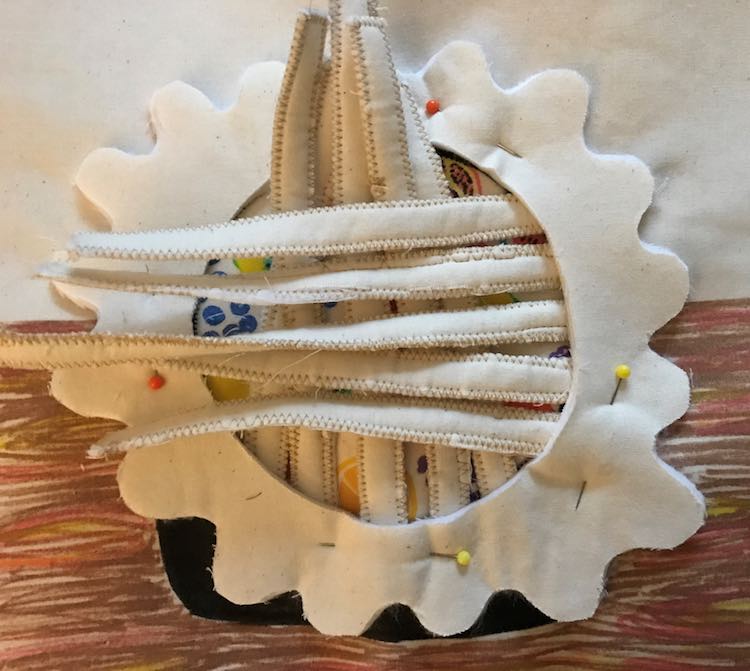
Finally sew down the crust while avoiding the ends of the stripes. While sewing over where the lattice stripes were attached I had to go over the stripes several times as the thickness caused my stitches to skip.
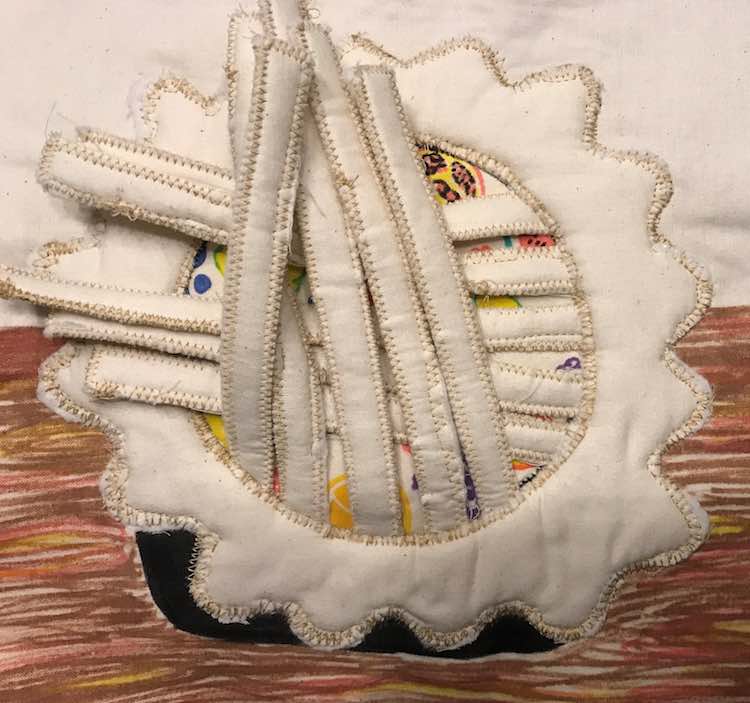
Then you can take a moment to marvel at your work by lifting up the stripes to check out the inside of your pie and confirm the lattice by weaving the stripes in place.
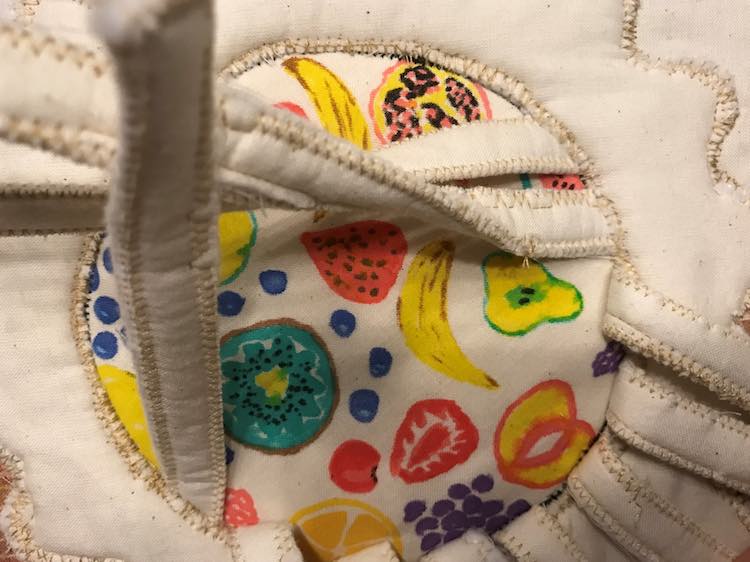
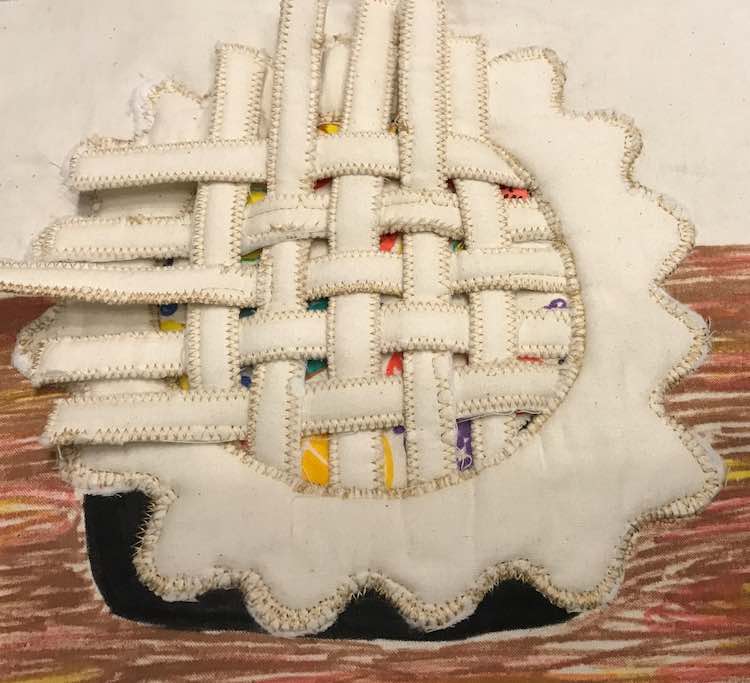
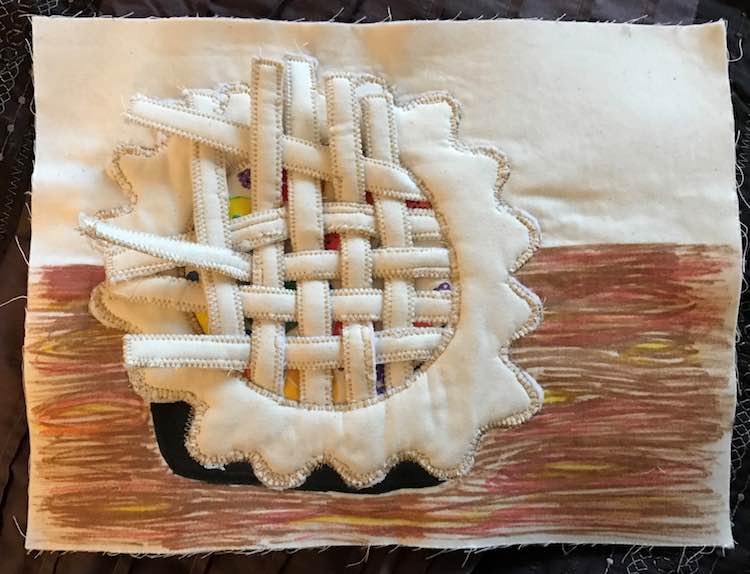
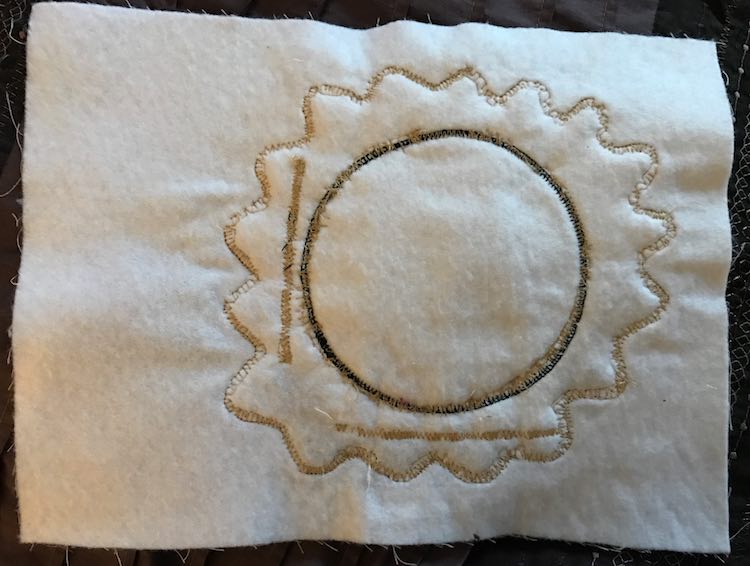
Then when you’re done the reverse side of this page you can pin the two sheets together right sides facing, sew around three sides, put right side out, sew the hole closed, and add grommets. You can visit my previous post on how to join the pages together if you want a more in depth look.
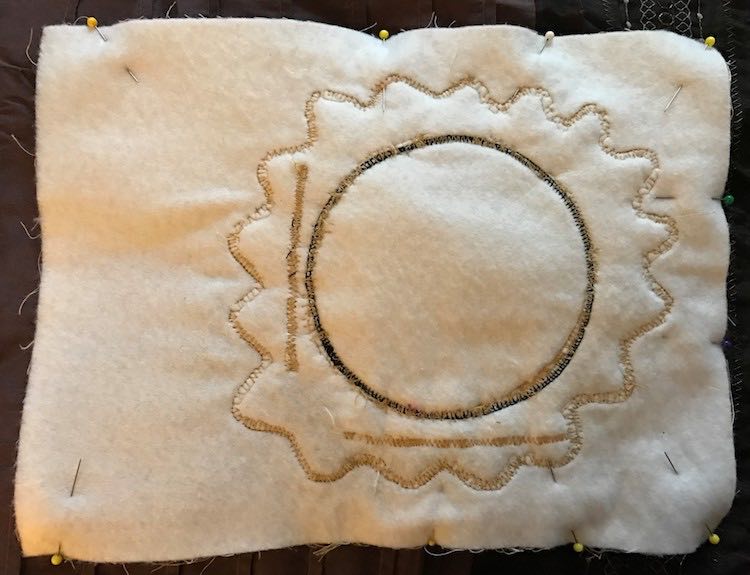
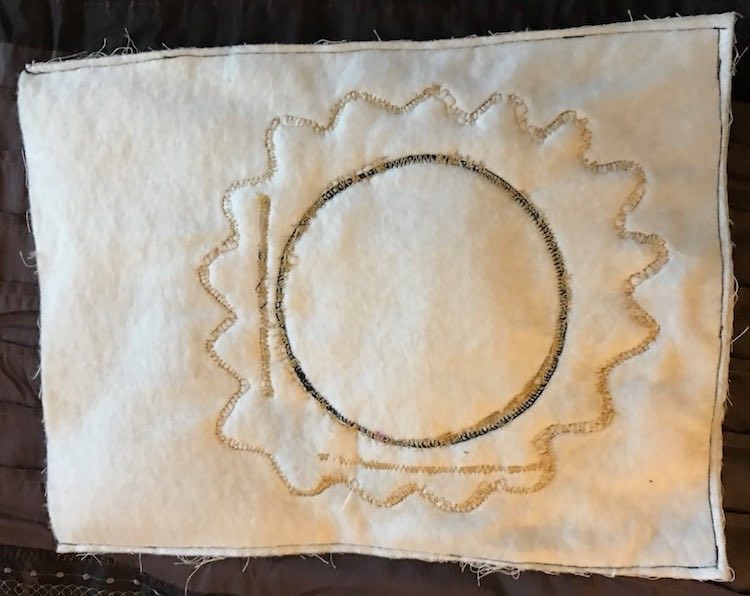
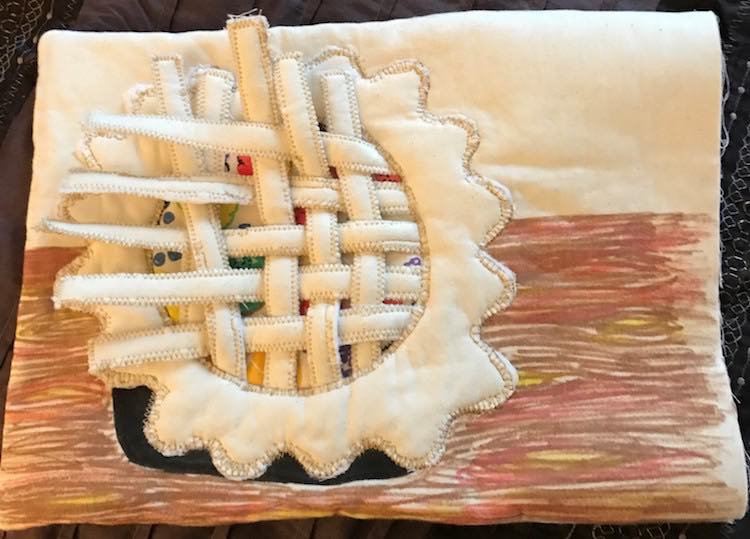
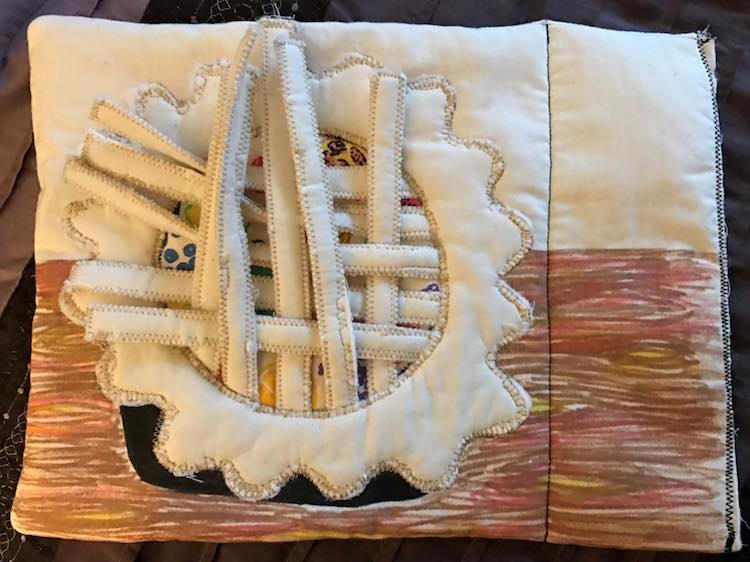
If I were to do this again…
- I would make the lattice strips thinner or use a stronger needle as it was hard to sew it together on the sewing machine. Since I made this page I’ve bought a denim needle that I would use if I had to make it again, but so far haven’t tested out.
- If I knew I wanted the background I would’ve drawn it on before I attached the pie rather than after so it would’ve been easier to fix the color with the iron and I could’ve colored it easier around the pie.
- I would, hopefully, remember to attach my lattice stripes at a diagonal, like my sketched out idea, rather than to the side and bottom.
- I would attach the stripes along the curve of the pie instead of in a straight line. This would’ve allowed the top of the crust to be thinner if I had wanted as there would’ve been less space requiring hiding.
You can check out my previous posts if you want more information on how I created my quiet book covers, joined my quiet book pages together, or see all my quiet book pages. I can’t wait to see what you come up with! Please share your quiet book page creation with me through the comments below, on my Facebook page, or on Instagram.
Did this save you time?
